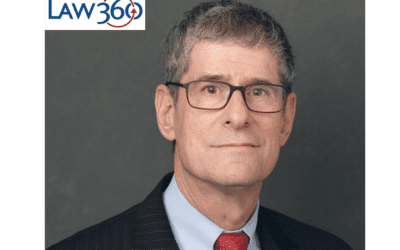The plaintiff, a 55-year-old night cleaner, filed for total and permanent disability benefits due to osteoarthritis of her right knee. The case is Demirovic v. Building Service 32B-J Pension Fund, 2006 U.S.App.LEXIS 25891, from the 2d U.S. Circuit Court of Appeals, Oct. 19, 2006.
Accompanying her application was a notice of award from the Social Security Administration approving her claim for federal disability benefits. Upon receipt of the plaintiff’s claim, the plan had her examined by an outside specialist who was asked to opine on whether the plaintiff was totally disabled and whether she would perform any gainful employment.
The doctor found Demirovic able to work in a sedentary capacity, which resulted in a denial of the claim. The plaintiff appealed, and a second specialist examined her, finding numbness in her hands and shoulder pain in addition to knee pain, although he did not rate impairment from those symptoms. The second doctor concluded that Demirovic was also physically capable of performing sedentary work but did not comment on vocational issues such as education and past work experience.
Upon receipt of that report, the plaintiff submitted additional medical evidence, which included one doctor’s opinion that Demirovic could not perform prolonged work, even at the sedentary level of exertion. Another doctor reported that in addition to her orthopedic impairments, Demirovic suffered from diabetic neuropathy and retinopathy, and a psychiatrist found depressive symptoms, poor concentration and slowed mentation. Despite that evidence, the fund’s appeals committee maintained the claim denial and the district court concurred in a summary judgment ruling.
Although the court of appeals disagreed with the plaintiff’s challenge to the application of a deferential standard of review based on a late claim determination, the court found merit in the plaintiff’s challenge to the disability determination itself. In particular, the court found:
”The fund’s determination that Demirovic is physically capable of performing some form of sedentary work may be supported by substantial evidence; but the fund appears to have given no consideration whatsoever to whether Demirovic could in fact find such sedentary work. This is not an abstract concern. Demirovic is in her late 50s; she has worked as an unskilled manual laborer for nearly 30 years; and her facility with the English language is sufficiently limited that she required her son to act as a translator during her examination.”
Although the fund argued that it was not required to take vocational circumstances into account, the Court of Appeals determined that without consideration of such factors, a plan administrator is unable to evaluate what ”unable … to engage in further employment” means. Hence, ”A determination of ’employability’ cannot be purely a medical diagnosis.” The court further concluded, ”The question before us is whether the SPD’s language may reasonably be interpreted – as it appears the fund interprets it – so strictly as to deny benefits to any claimant who is physically capable, in the abstract, of any kind of work whatsoever, regardless of the claimant’s individual vocational circumstances. We hold that it may not.”
The court went on to explain that its determination was consistent with decisions reached by other circuits. The 11th Circuit, in Helms v. Monsanto Co. Inc., 728 F.2d 1416 (11th Cir. 1984), held that it would be improper to interpret a general disability requirement so literally that someone would be denied benefits if capable of engaging only ”in some minimal occupation, such as selling peanuts or pencils, which would yield only a pittance.” Id. at 1421. Likewise, in Torix v. Ball, 862 F.2d 1428 (10th Cir. 1988), the court interpreted a disability requirement that the insured be incapable of pursuing ” ‘any occupation or employment for wages or profit as a result of bodily injury or disease’ ” to require consideration of all circumstances that would offer a realistic evaluation of employability. Hence, the court concluded:
”We also find the reasoning of Helms and Torix persuasive. The phrase ‘any gainful employment’ in the context of Demirovic’s insurance plan may not reasonably be read as denying benefits to a person who is physically capable of any employment whatsoever, so long as it earns a nominal profit. Nor may it be read as allowing an administrator to disregard a claimant’s individual vocational circumstances. To do so would ‘render the plan’s promise of a disability pension hollow for all but the most grievously incapacitated claimants,’ Brown v. Bd. of Trustees of the Bldg. Serv. 32B-J Pension Fund, 392 F.Supp.2d 434, 444 (E.D.N.Y. 2005), would deprive plan participants of their reasonable expectations, and is arbitrary and capricious.
”A finding that a claimant is physically capable of sedentary work is meaningless without some consideration of whether she is vocationally qualified to obtain such employment, and to earn a reasonably substantial income from it, rising to the dignity of an income or livelihood, though not necessarily as much as she earned before the disability.
”This standard reflects the ‘most important purpose’ of ERISA, which is ‘to assure American workers that they may look forward with anticipation to a retirement with financial security and dignity, and without fear that this period of life will be lacking in the necessities to sustain them as human beings within our society.’ S. REP. NO. 93-127 (1973), reprinted in 1974 U.S.C.C.A.N. 4838, 4849.”
Consequently, the court ruled a plan is required to perform both a medical and a ”non-medical assessment as to whether a claimant for disability benefits has the vocational capacity to perform any type of work – of a type that actually exists in the national economy … that permits her to earn a reasonably substantial income from her employment, rising to the dignity of an income or livelihood.”
While not suggesting a particular method to determine vocational capacity, the court directed it must be satisfied ”that the plan’s consideration of the plaintiff’s circumstances is neither arbitrary nor capricious.” To do so, the plan may consider opinions rendered by vocational rehabilitation consultants, transferable skills analyses, or even the Social Security Medical-Vocational Guidelines, a formulation incorporated in the Code of Federal Regulations (20 C.F.R. §404, Subpart P, Appendix 2), which takes into consideration a claimant’s age, education, and past work in addition to medical limitations.
It is refreshing to see an opinion like Demirovic. Both Helms and Torix seemed to have been forgotten as the courts have become more lenient in accepting plan interpretations that appear to push the envelope of being arbitrary and capricious. Of course, what the 2d Circuit ruled in this opinion is just simple common sense. The mere fact that someone may be physically capable of working does not automatically mean there is a realistic possibility of employment.
In this case, the plaintiff was in an age category the Social Security Administration would deem ”advanced age,” was not fluent in English and had only worked at a strenuous job. She clearly had no skills transferable to work in a sedentary job without identifying what jobs she could perform in view of her age, education, and job experience. A similar conclusion was reached in Brown v. Board of Trustees of the Building Service 32B-J Pension Fund, 392 F.Supp.2d 434 (E.D.N.Y. 2005), which was cited in this opinion, as well as in Poulos v. Motorola Long Term Disability Plan, 93 F.Supp.2d 926 (N.D.Ill. 2000), a case my firm litigated. The court’s recognition of the purpose of the ERISA statute as well as the underlying basis for disability benefits is also a key aspect of this ruling, similar to the recognition in Radford Trust v. Unum Life Insur. Co. of America, 321 F.Supp.2d 226, 240 (D.Mass. 2004) that ”decisions whether and how to ensure that disability does not lead to poverty are obviously of great societal importance.”
This ruling goes a long way toward fulfilling the promise made when an employer offers an employee insurance against disability and the employee, in time of need, has to rely on the availability of those benefits.
This article was initially published in the Chicago Daily Law Bulletin.






